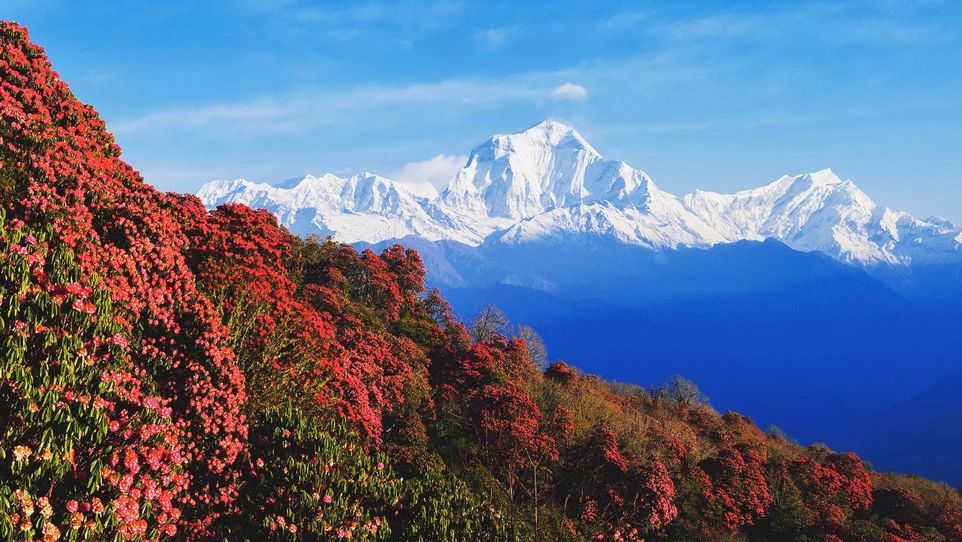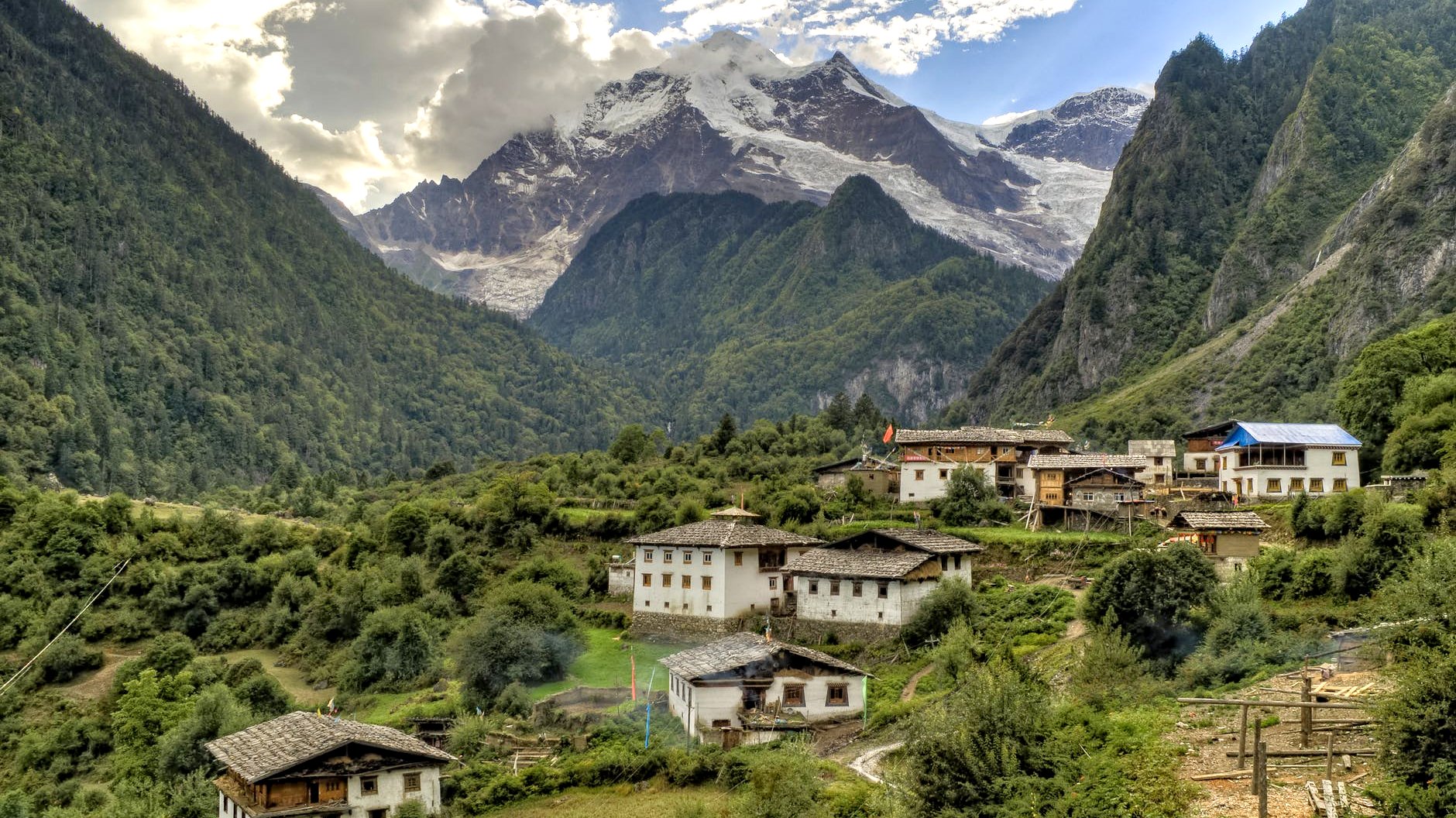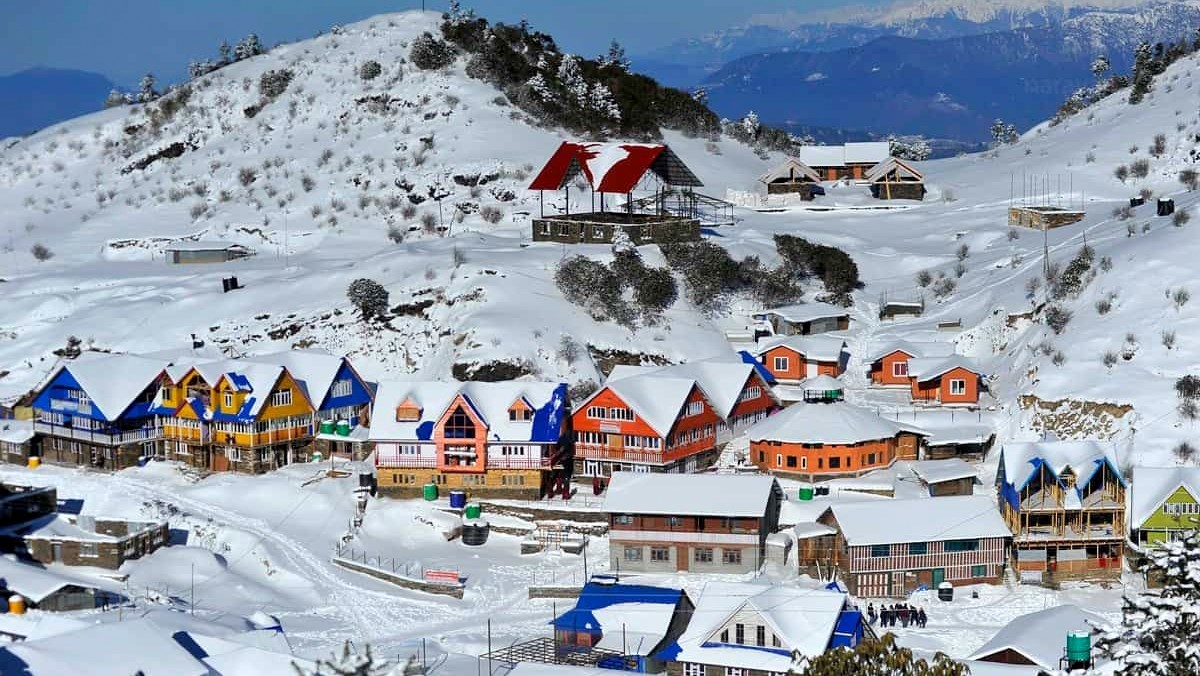Nepal, an exquisite blend of nature and culture, offers more than just majestic Himalayan beauty. The intricate tapestry of its weather and climate is as diverse as its landscapes. From the balmy Terai plains to the imposing Himalayan peaks, the nation’s climatic nuances are a true reflection of its geographical splendor. Luxury Holiday Nepal is here to guide you through the captivating altitudinal climatic zones of this enthralling destination.
Nepal's climate can be broadly categorized into four zones: tropical, subtropical, temperate, and alpine
Tropical Zone
-
Location: Primarily the southern lowlands, also known as the Terai region.
-
Characteristics: Defined by a tropical climate, summers are hot and humid, with temperatures often ranging between 25°C to 38°C. Winters are mild, with temperatures hovering between 10°C to 20°C. The monsoon season from June to September brings abundant rainfall, rejuvenating the lush plains and dense forests.
Subtropical Zone
-
Location: This zone acts as a bridge between the Terai and the mid-hills, marking the beginning of hilly terrain.
-
Characteristics: The subtropical zone has moderately warm summers with temperatures between 20°C to 30°C. Winters are cooler than the tropical zone, with temperatures varying between 5°C to 15°C. Rainfall is moderate but consistent, creating verdant landscapes and fostering diverse wildlife.

Temperate Zone
-
Location: The mid-hills and valleys of Nepal, offering panoramic vistas and serene trekking trails.
-
Characteristics: The temperate climate here ensures summers remain mild, with temperatures fluctuating between 15°C to 25°C. Winters are chilly, especially at higher altitudes, with temperatures ranging from 0°C to 10°C. Frost can be a common sight, and the blooming rhododendrons during spring add a touch of vibrancy to the landscapes.
Alpine Zone
-
Location: This zone encompasses the high Himalayas, the abode of perennial snow and rugged terrains.
-
Characteristics: The alpine climate is synonymous with cold. Even during the warmest months, temperatures rarely go above 10°C, and in the colder months, they can plummet to -25°C or even lower in the highest reaches. Vegetation is sparse, giving way to vast glaciers and majestic mountain vistas.
Nepal's climatic spectrum, stretching from the balmy tropical warmth to the biting alpine cold, offers travelers an array of experiences within a relatively short distance.
The Geographical Area of Nepal is divided into three Geographic regions
Nepal is a landlocked country in South Asia, situated between India and China. The total area of Nepal is approximately 147,516 square kilometers (56,956 square miles), making it the 93rd largest country in the world by land area. Nepal's terrain is diverse, ranging from the low-lying Terai plains in the south to the high Himalayan mountain range in the north, including Mount Everest, the world's highest peak.
Terai Region
The Terai is the southernmost belt of Nepal, lying adjacent to the northern plains of India. Often referred to as the "Granary of Nepal", this region serves as the nation's agricultural heartland, offering fertile plains and dense, subtropical forests. Its topography is characterized by flat and arable land, making it conducive for farming a variety of crops. Besides agriculture, the Terai is rich in biodiversity. National parks and wildlife reserves dot this region, housing an array of fauna like the Bengal tiger, one-horned rhinoceros, and wild elephants. The dense jungles, intertwined with the traditions and cultures of its inhabitants, make the Terai a blend of nature and cultural heritage.
Hill Region
As one ventures north from the Terai, they enter the undulating landscapes of the Hill region. This central part of Nepal is characterized by rolling hills, deep valleys, and meandering rivers. While the Terai thrives on its plains, the Hills boast terraced farming, a testament to the adaptability of the Nepali people. The climate here, transitioning from subtropical to temperate, varies with altitude. Kathmandu, the capital city, along with other major towns, nestles within this region, serving as hubs of culture, religion, and history. The Hill region, with its temples, monasteries, and historical sites, encapsulates the essence of Nepali traditions and customs.

Himalayan Region
Dominating the northern frontier of Nepal is the awe-inspiring Himalayan region. This area, home to some of the world's highest peaks including Mount Everest, stands as a testament to nature's grandeur. The rugged terrains and cold-to-arctic climates, characteristic of this region, haven't deterred various ethnic communities from making it their home. They've not only survived but thrived, showcasing an incredible blend of culture and adaptability. Apart from its natural beauty, the Himalayas are a haven for trekkers and mountaineers, with trails that offer unparalleled vistas and challenges. This region, while daunting, is a mesmerizing blend of nature's raw beauty and human endurance.
Seasons and weather of Nepal
Nepal's seasons and weather are influenced by its topography and altitude, which create distinct climate zones across the country. The country experiences four main seasons:
Spring (March to May)
Spring is one of the most popular trekking seasons in Nepal. With moderate temperatures and clear skies, the landscapes are particularly vibrant during this season.
- Weather: Warm days with cool nights. In the Terai and Hill regions, temperatures usually range between 10°C to 25°C, while in the Himalayas, it can range between 0°C to 15°C.
- Highlights: Blooming rhododendrons paint the hills in various shades, especially at higher altitudes. This season offers excellent visibility for mountain views.
Summer/Monsoon (June to September)
Coinciding with the monsoon, summer in Nepal is characterized by hot, wet days.
- Weather: Warm and humid. The Terai can get particularly hot, with temperatures often rising above 30°C. The Hills and the lower Himalayan ranges see temperatures between 20°C to 30°C, accompanied by heavy rainfall.
- Highlights: The monsoon rains rejuvenate the land, resulting in lush green landscapes. However, the heavy rains can also lead to landslides in hilly and mountainous areas.

Autumn (October to November)
Autumn is another favorite among trekkers and is considered the best time to visit Nepal.
- Weather: Cool and clear. In the Terai, temperatures range from 10°C to 25°C. The Hills experience temperatures between 5°C to 20°C, while the Himalayas can range between -10°C to 10°C, especially at higher altitudes.
- Highlights: The air post-monsoon is dust-free, making it the perfect time for crystal-clear mountain views. The major festivals of Dashain and Tihar also fall during this season.
Winter (December to February)
The winter months can be quite cold, especially in the Himalayas.
- Weather: In the Terai, temperatures hover between 5°C to 20°C. The Hill regions experience colder conditions with temperatures between 0°C to 10°C. The Himalayan region, especially at higher altitudes, sees temperatures plunging below -15°C.
- Highlights: Snowfall in the Himalayan regions is a common occurrence. The lower regions remain dry and can be ideal for wildlife viewing, especially in the Terai's national parks.

From balmy springs to chilly winters, Nepal's seasons offer distinctly unique experiences. Depending on what you're seeking – be it trekking amidst blooming flowers, basking in clear mountain vistas, or witnessing the culture during festive times – there's a perfect season in Nepal waiting for you.
Important Articles regarding Traveling in Nepal
Introduction of Nepal
FOODS IN NEPAL
Before You Plan a Nepal Trip
While You are in Nepal
Before Traveling Nepal
Best-selling Luxury Tour and Trekking in Nepal
Kathmandu Tour with the sunrise view from Nagarkot
Luxury Nepal Tour with Everest Scenic Flight
Nepal Luxury Tour with Everest flight and birthplace of Buddha
Everest Base Camp Helicopter with Kathmandu and Pokhara Luxury Tour
Everest Helicopter with Luxury Nepal Tour
Luxury Nepal Tour with Everest Scenic Flight
Luxury Nepal Tour with Everest Landing Helicopter Tour
Everest Heli with Luxury Kathmandu, Pokhara, and the Birthplace of Buddha
Kathmandu and Chitwan Luxury Tour with Dhulikhel
Luxury Everest Base Camp Heli Trek
Luxury Nepal Tour with Dhampus Sarangkot Trek
Upper Mustang Heli Trek with Luxury Accommodations in Kathmandu and Pokhara
VVIP Everest Base Camp Luxury Trek
Luxury Nepal Tour with optional Chitwan, Pokhara, and Lumbini
If you need any further information, please contact us by email: [email protected], Phone: +977- 985 100 5129 (WhatsApp)




